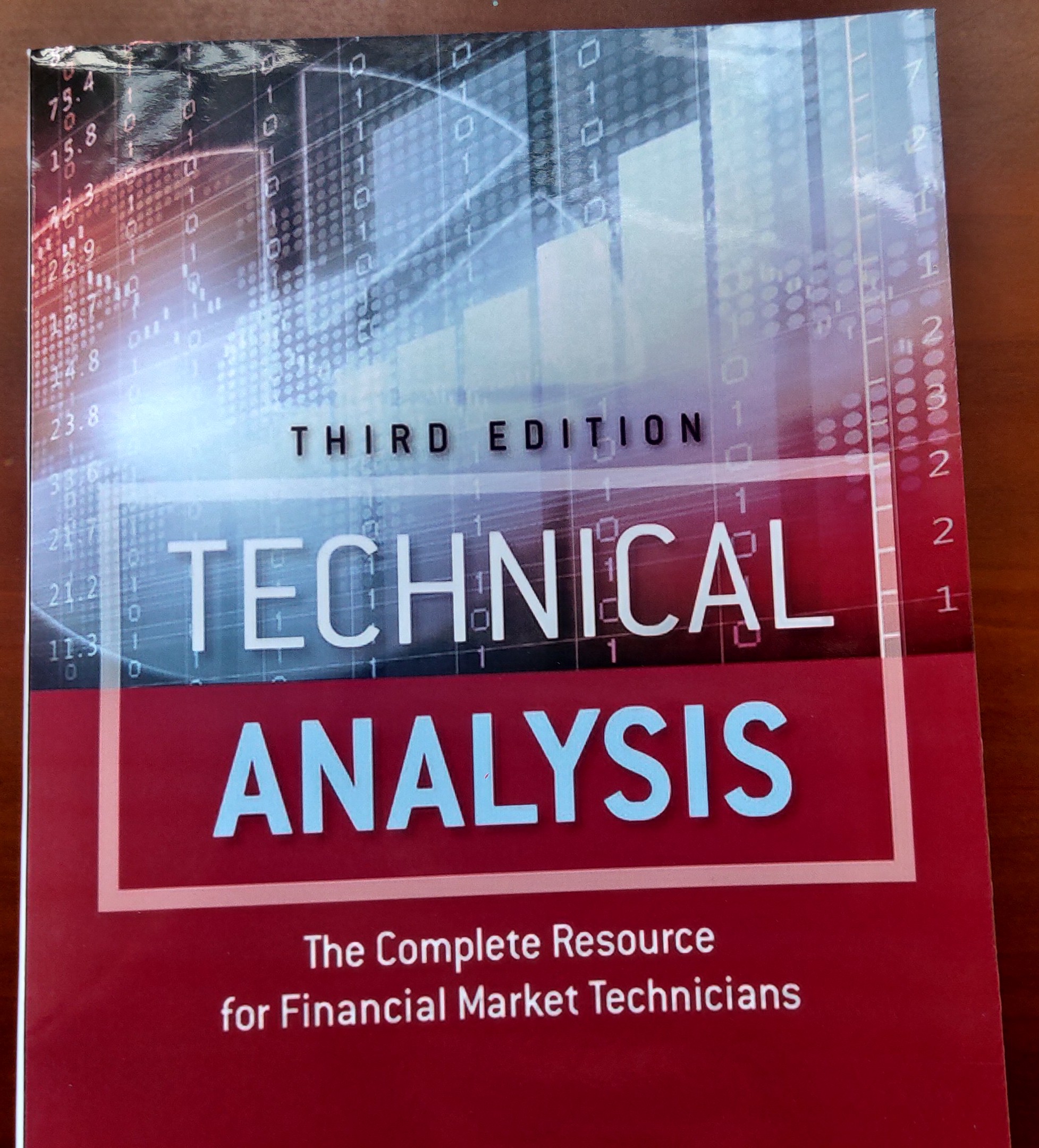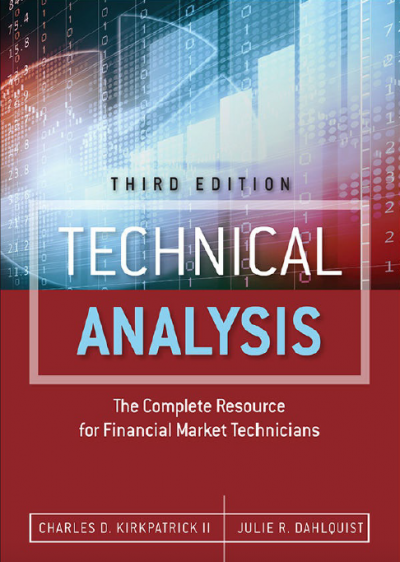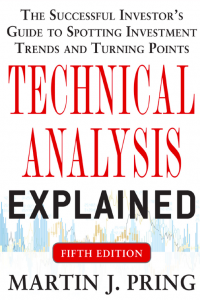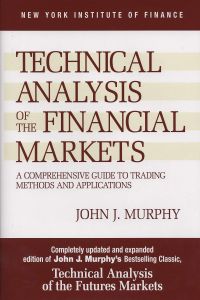Technical Analysis The Complete Resource for Financial Market Technicians 3rd
TECHNICAL ANALYSIS THE COMPLETE RESOURCE FOR FINANCIAL MARKET TECHNICIANS 3rd.
Đặt in thành sách tại HoaXanh, xem sách in mẩu trong video bên dưới.
- 240,000đ
- Mã sản phẩm: TE3827
- Tình trạng: 2

Content
Part I: Introduction
1 Introduction to Technical Analysis
2 The Basic Principle of Technical Analysis— The Trend
C hapter O bjectives
H ow Does the Technical Analyst M ak e M oney?
W hat Is a Trend?
H ow Are Trends Identified?
Trends Develop from Supply and Demand
W hat Trends Are There?
W hat O ther Assumptions Do Technical Analysts M ak e?
C onclusion
R eview Q uestions
3 H istory of Technical Analysis
C hapter O bjectives
E arly F inancial M ark ets and E xchanges
M odern Technical Analysis
C urrent Advances in Technical Analysis
4 The Technical Analysis C ontroversy
C hapter O bjectives
Do M ark ets F ollow a R andom W alk ?
Fat Tails
Large Unexpected Drawdowns
Proportions of Scale
C an Past Patterns Be U sed to Predict the F uture?
W hat About M ark et E fficiency?
New Information
Are Investors Rational?
Will Arbitrage Keep Prices in Equilibrium?
Behavioral F inance and Technical Analysis
Pragmatic C riticisms of Technical Analysis
W hat Is the E mpirical Support for Technical Analysis?
C onclusion
R eview Q uestions
Part II: M ark ets and M ark et Indicators
5 An O verview of M ark ets
C hapter O bjectives
In W hat Types of M ark ets C an Technical Analysis Be U sed?
Types of C ontracts
Cash Market
Derivative Markets
Swaps and Forwards
H ow Does a M ark et W ork ?
W ho Are the M ark et Players?
H ow Is the M ark et M easured?
Price-Weighted Average
Market Capitalization Weighted Average
Equally Weighted (or Geometric) Average
C onclusion
R eview Q uestions
6 Dow Theory
C hapter O bjectives
Dow Theory Theorems
The Primary Trend
The Secondary Trend
The Minor Trend
Concept of Confirmation
Importance of Volume
C riticisms of the Dow Theory
C onclusion
R eview Q uestions
7 Sentiment
C hapter O bjectives
W hat Is Sentiment?
M ark et Players and Sentiment
H ow Does H uman Bias Affect Decision M ak ing?
C rowd Behavior and the C oncept of C ontrary O pinion
H ow Is Sentiment of U ninformed Players M easured?
Sentiment Indicators Based on Options and Volatility
Polls
Other Measures of Contrary Opinion
Unquantifiable Contrary Indicators
Historical Indicators
Unusual Indicators
H ow Is the Sentiment of Informed Players M easured?
Insiders
Sentiment in Bonds
Treasury Bond Futures Put/Call Ratio
Treasury Bond COT Data
Treasury Bond Primary Dealer Positions
T-Bill Rate Expectations by Money Market Fund Managers
G old Sentiment
C onclusion
R eview Q uestions
8 M easuring M ark et Strength
C hapter O bjectives
M ark et Breadth
The Breadth Line or Advance-Decline Line
Double Negative Divergence
Traditional Advance-Decline Methods That No Longer Are Profitable
Advance-Decline Line to Its 32-Week Simple Moving Average
Breadth Differences
Breadth Ratios
Breadth Thrust
Summary of Breadth Indicators
U p and Down Volume Indicators
The Arms Index
Volume Thrust with Up Volume and Down Volume
Ninety Percent Downside Days (NPDD)
10-to-1 Up Volume Days and 9-to-1 Down Volume Days
Net New H ighs and Net New Lows
New Highs Versus New Lows
High Low Logic Index
Hindenburg Omen
U sing M oving Averages
Coppock Curve
Number of Stocks Above Their 30-Week Moving Average
Very Short-Term Indicators
Breadth and New Highs to New Lows
Net Ticks
C onclusion
R eview Q uestions
9 Temporal Patterns and C ycles
C hapter O bjectives
Periods Longer Than F our Years
Kondratieff Waves, or K-Waves
Population Waves
17–18-Year Alternating Stock Market Cycles
Decennial Pattern
Periods of F our Years or Less
Four-Year or Presidential Cycle
Election Year Pattern
Seasonal Patterns
January Signals
January Barometer
January Effect
E vents
C onclusion
R eview Q uestions
10 F low of F unds
C hapter O bjectives
F unds in the M ark etplace
Money Market Funds
Margin Debt
F unds O utside the Security M ark et
Household Financial Assets
Money Supply (M1 & M2)
Money Velocity
Yield Curve
Bank Liquidity
The C ost of F unds and Alternative Investments
Short-Term Interest Rates
Long-Term Interest Rates (or Inversely, the Bond Market)
Corporate Bond and Stock Market Yield Spread
The Misery Indices
F ed Policy
The Federal Reserve Valuation Model
Federal Funds
Free Reserves
Three Steps and a Stumble and Two Tumbles and a Jump
C onclusion
R eview Q uestions
Part III: Trend Analysis
11 H istory and C onstruction of C harts
C hapter O bjectives
H istory of C harting
W hat Data Is Needed to C onstruct a C hart?
W hat Types of C harts Do Analysts U se?
Line Charts
Bar Charts
Candlestick Charts
W hat Type of Scale Should Be U sed?
Arithmetic Scale
Semi-Logarithmic Scale
Point and F igure C harts
One-Box (Point) Reversal
Box Size
Multibox Reversal
Time
Arithmetic Scale
Logarithmic Scale
C loud C harts (Ichimok u Kink o H yo)
O ther C harting M ethods Independent of Time
Kagi Chart
Renko Chart
Line-Break Chart (2 or 3 Lines)
C onclusion
R eview Q uestions
12 Trends— The Basics
C hapter O bjectives
Trend— The Key to Profits
Trend Terminology
Basis of Trend Analysis— Dow Theory
H ow Does Investor Psychology Impact Trends?
H ow Is the Trend Determined?
Peaks and Troughs
Determining a Trading R ange
What Is Support and Resistance?
Why Do Support and Resistance Occur?
What About Round Numbers?
How Are Important Reversal Points Determined?
How Do Analysts Use Trading Ranges?
Directional Trends (U p and Down)
What Is a Directional Trend?
How Is an Uptrend Spotted?
Channels
Internal Trend Lines
O ther Types of Trend Lines
Trend Lines on Point and Figure Charts
Speed Lines
Andrews Pitchfork
Gann Fan Lines
C onclusion
R eview Q uestions
13 Break outs, Stops, and R etracements
C hapter O bjectives
Break outs
How Is Breakout Confirmed?
Can a Breakout Be Anticipated?
Stops
What Are Entry and Exit Stops?
Changing Stop Orders
What Are Protective Stops?
What Are Trailing Stops?
What Are Time Stops?
What Are Money Stops?
How Can Stops Be Used with Breakouts?
Using Stops When Gaps Occur
Placing Stops for a False (or “Specialist”) Breakout
R etracements
Pullbacks and Throwbacks
Waiting for Retracement
Calculating a Risk/Return Ratio for Breakout Trading
C onclusion
R eview Q uestions
14 M oving Averages
C hapter O bjectives
W hat Is a M oving Average?
H ow Is a Simple M oving Average C alculated?
Length of Moving Average
Using Multiple Moving Averages
W hat O ther Types of M oving Averages Are U sed?
The Linearly Weighted Moving Average (LWMA)
The Exponentially Smoothed Moving Average (EMA)
Wilder Method
Geometric Moving Average (GMA)
Triangular Moving Average
Variable EMAs
Strategies for U sing M oving Averages
Determining Trend
Determining Support and Resistance
Determining Price Extremes
Giving Specific Signals
W hat Is Directional M ovement?
Constructing Directional Movement Indicators
Using Directional Movement Indicators
W hat Are E nvelopes, C hannels, and Bands?
Percentage Envelopes
Bands
13
Trading Strategies Using Bands and Envelopes
Channel
C onclusion
R eview Q uestions
Part IV: C hart Pattern Analysis
15 Bar C hart Patterns
C hapter O bjectives
W hat Is a Pattern?
Common Pattern Characteristics
Do Patterns E xist?
Behavioral Finance and Pattern Recognition
C omputers and Pattern R ecognition
M ark et Structure and Pattern R ecognition
Bar C harts and Patterns
H ow Profitable Are Patterns?
C lassic Bar C hart Patterns
Double Top and Double Bottom
Rectangle (Also “Trading Range” or “Box”)
Triple Top and Triple Bottom
Standard Triangles
Descending Triangle
Ascending Triangle
Symmetrical Triangle (Also “Coil” or “Isosceles Triangle”)
Broadening Patterns
Diamond Top
Wedge and Climax
Patterns with R ounded E dges— R ounding and H ead-and-Shoulders
Rounding Top, Rounding Bottom (Also “Saucer,” “Bowl,” or “Cup”)
Head-and-Shoulders
Shorter Continuation Trading Patterns—Flags and Pennants (Also “Half-Mast Formation”)
Long-Term Bar C hart Patterns with the Best Performance and the Lowest R isk of
F ailure
C onclusion
R eview Q uestions
16 Point and F igure C hart Patterns
C hapter O bjectives




